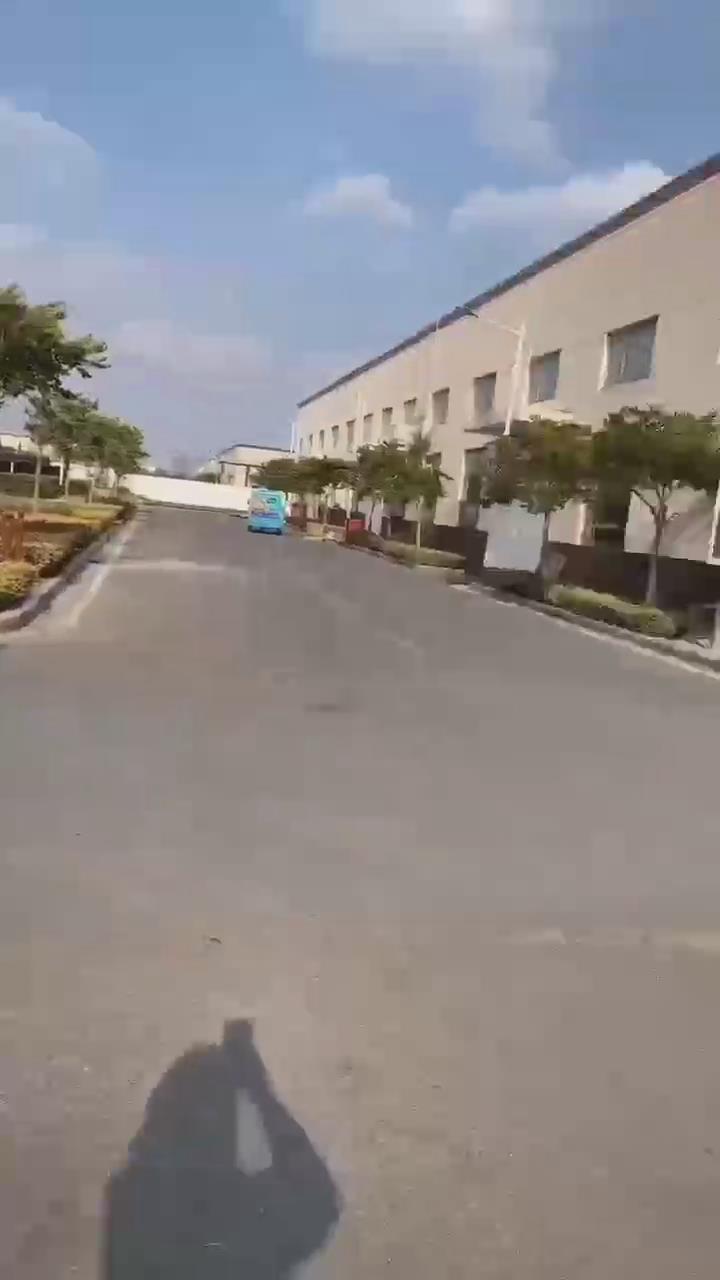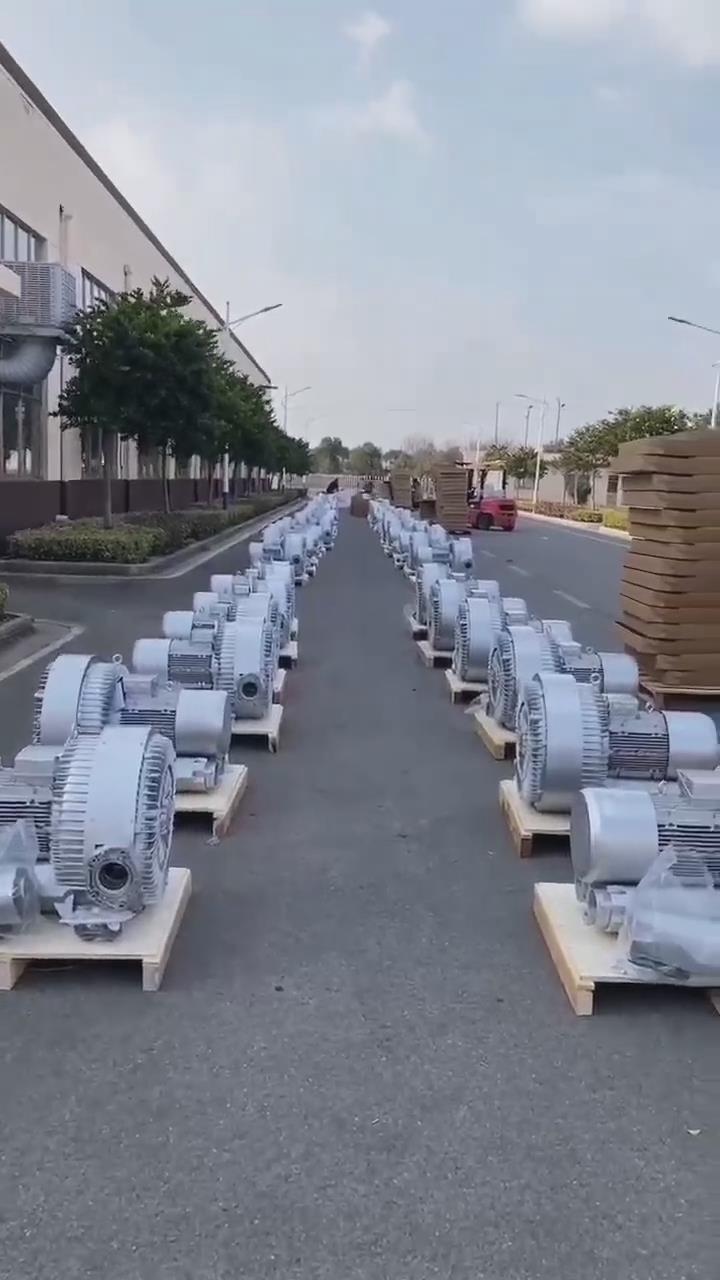1, the main use of fire valve, smoke exhaust valve
High-rise buildings and other types of modern buildings are mostly equipped with ventilation, air conditioning and smoke exhaust system, once the fire, the pipeline in these systems will become the flame, smoke spread channel. In order to prevent the spread of fire through the duct expansion, in the "building design fire protection code" GBJ16-87 and "high-rise civil building design fire protection code" GB50045-95 are clearly stipulated in the fire valve, smoke exhaust
Valve setting requirements.
The fire valve is used in the air supply and return pipe of ventilation and air conditioning system. It is usually open. When the fire happens, the gas temperature in the pipe reaches 70℃, it is closed by itself, and it can meet the requirements of fire resistance stability and fire resistance integrity in a certain period of time. Exhaust valve used in the exhaust system or exhaust fan at the entrance of suction pipe, a closed at ordinary times, when the fire broke out, by manual or automatic fire alarm signal open valve, according to system function with smoke, flue gas temperature reaches 280 ℃ when the pipe shut down automatically, and can satisfy the stability and refractory refractory integrity within a certain amount of time requirements, the effect of smoke proof.
2, fire valve, smoke exhaust valve in ventilation, air conditioning and smoke control system important role
Fire valve includes gravity fire valve, fire control valve, fire tuyere, pneumatic fire valve, smoke fire valve, electronic automatic smoke fire valve and other products; Smoke exhaust valve includes smoke exhaust fire valve, plate smoke outlet (ceiling), shaft smoke outlet and other products. Fire valve and smoke exhaust valve are important components in ventilation, air conditioning and smoke prevention and exhaust system. They play an important role in the system mainly in the following three aspects:
2.1. Smoke and fire resistance
In the air supply system, the air sent by the fan must be distributed to the branch pipe through the main pipe; In the smoke exhaust system, the smoke from the branch pipe to the main pipe, into the smoke exhaust fan discharged. When a fire occurs in the building, in the ventilation and air conditioning system, in order to prevent the spread of fire through the air supply system, when the gas temperature in the air supply system reaches 70℃, the fuse on the fire valve mechanism moves, the valve is also quickly closed, and the flue gas and fire are cut off along the passage of the air duct. Similarly, in the exhaust system, fire, smoke valve open, to smoke, in order to truncate the high temperature flue gas flow in the exhaust pipe, prevent the fire from spreading to another fire partition, when the discharge flue gas temperature of 280 ℃, smoke fire damper, smoke on the fuse, the valve must be shut down automatically, prevent smoke. It can be seen that the fire valve and smoke exhaust valve achieve the general rule, the break is broken smoke isolation and fire resistance.
2.2. Regulation
In the ventilation and air conditioning system pipeline design, although the calculation, but in the actual engineering operating conditions if there is a change, it is necessary to adjust the air volume of each part of the system through the fire valve valve, system debugging, the valve opening fixed down, reasonable distribution, in order to meet the design requirements.
2.3. Start the no-load function
During the installation and debugging of all centrifugal fans in the ventilation and air conditioning and smoke exhaust system and special smoke exhaust axial fans for fire fighting, for the sake of safety, the starting current of the motor should be minimum, which is generally no-load starting and can be realized by temporarily cutting off the pipeline through the valve.
3. Quality requirements in engineering applications
3.1 Product quality requirements
The current fire, smoke series products manufacturer, our fire supervision, audit department and designing department should be strictly controlled, let party a chooses "three certificates" complete, qualified products, or have the manufacturer's factory certification, the organs of public security fire control product sales license, national fireproof construction material quality supervision inspection center of product inspection report. From the national inspection report and product technical parameters can reflect the product performance and quality, based on the national standard "fire valve test method" GB15930-1995 and "smoke exhaust fire valve test method" GB15931-1995. Its product quality requirements are reflected in five aspects:
3.1.1 Action performance test of temperature sensor
The temperature sensing element of fire valve and smoke exhaust valve shall be checked whether it can be closed accurately according to the required temperature through non-action and action test at the specified temperature of constant temperature water bath and oil bath respectively.
3.1.2. Shutdown reliability test
After 250 closed operations on the test table, the specimen should be able to be closed flexibly and reliably from the open position, and the parts should have no obvious wear, deformation and damage affecting their sealing performance. To verify the reliability of the shutdown.
3.1.3 Salt spray test
The specimen should be able to close reliably from the open position to test the anti-corrosion ability of the valve in practical engineering.
3.1.4 air leakage test
Before and after the valve body under the specified pressure difference conditions, the leakage air volume per unit area of the specimen is not more than 700Nm3/(h·m2), in order to test the sealing performance of the valve after closing.
3.1.5. Fire resistance test
Through fire resistance test, according to the specified time in the closed capacity and unit area of air leakage two indicators, determine the fire resistance of the valve.
In addition, the technical parameters of the product require its fire resistance limit of 3h.
3.2 Installation quality requirements
In daily fire inspection and project acceptance work, the author found that due to the quality problems of installation and construction, the fire exhaust valve does not work or malfunction, and the smoke exhaust valve, smoke outlet, fire valve and fire outlet are difficult to reset. This should cause the attention of the construction side, pay attention to the following installation requirements.
3.2.1 Fire valve and smoke exhaust valve should be constructed strictly according to the drawing, and separate supports and hangers should be set to avoid air duct deformation under high temperature and affect valve function.
3.2.2 When the valve is installed on the ceiling or in the air duct, an access hole should be set on the ceiling plate or the air duct wall. Generally, the size of the access hole should not be less than 450×450mm. When conditions are limited, the access hole on the ceiling can also be reduced to 300×300mm.
3.2.3 The air duct between fire valve and firewall (or floor) should be made of steel plate with δ≥1.5mm, and it is better to use refractory material for heat preservation and insulation or non-combustible material protection outside the air duct to ensure fire resistance of the firewall.
3.2.4 There should be a net space of 350mm on the mechanical side of the valve to facilitate maintenance.

4. Some problems of fire prevention and smoke exhaust valve in engineering
In my daily fire prevention construction review, engineering inspection and acceptance work, I found that some problems exist in fire prevention and smoke exhaust valve are as follows, for the reference of peers.
4.1 The air supply and return pipes of the fire control room are not equipped with fire valves at the places where they run through the wall.
In the process of construction review, it is found that there is no fire valve in the air supply and return pipes of the fire control room through the wall in some engineering design drawings, which is inconsistent with article 6.2.2 in the Design Code for Automatic fire alarm System GB50116-98. The purpose of setting fire valve is to ensure the fire safety of the fire control room.
4.2 The control and display functions of fire control equipment for smoke prevention and exhaust facilities are not perfect
According to gb50116-98 in the provisions of article 6.3.9: fire alarm confirmation, must stop the relevant parts of the air conditioning air supply, close the electric fire valve, and receive its feedback signal; At the same time, start the smoke prevention and exhaust fan, exhaust valve, etc., and receive its feedback signal. In some engineering linkage control, the smoke exhaust valve and smoke outlet cannot be controlled by zones, or the feedback signal cannot be received and the opening and closing condition of valve parts cannot be reflected.
4.3 There is no pneumatic fire valve in the gas fire extinguishing system of pipe network.
Gb50116-98 article 6.3.4.3 requirements: "in the delay stage, should automatically close the fire doors and Windows, stop the ventilation and air conditioning system, close the relevant parts of the fire valve." This requires that pneumatic fire valve must be installed in the gas fire extinguishing system of pipe network to link with the fire control equipment. This function is not available in individual projects.
4.4 There is no remote control when air supply and smoke exhaust are used together
Basement of some buildings, parking lot using share duct air supply and exhaust, we found that the ventilator and smoke ventilator valve can only the scene in front of the manual, cannot achieve the remote control control room, at ordinary times, blower, its front end cut-off valve is open, in case of fire, need someone to the scene to shut down the fan before the cut-off valve, it is not practical, Directly affect the smoke exhaust system. Therefore, it is recommended to add remote control function to the globe valve.
5. System linkage debugging and maintenance management.
Fire valve and smoke exhaust valve are not independent smoke and fire prevention products in actual engineering, but have their unique linkage logic relationship in the whole fire control linkage control system. Therefore, in order to ensure that it plays a role in the fire protection system, before the acceptance of the system, according to the linkage requirements, it is necessary to conduct comprehensive debugging, so that the ventilation, air conditioning and smoke prevention and exhaust system to meet the requirements of the specification. After acceptance, there should be special personnel for planned daily maintenance management, in order to ensure that the valve body is in normal condition, play its role in smoke and fire prevention.

